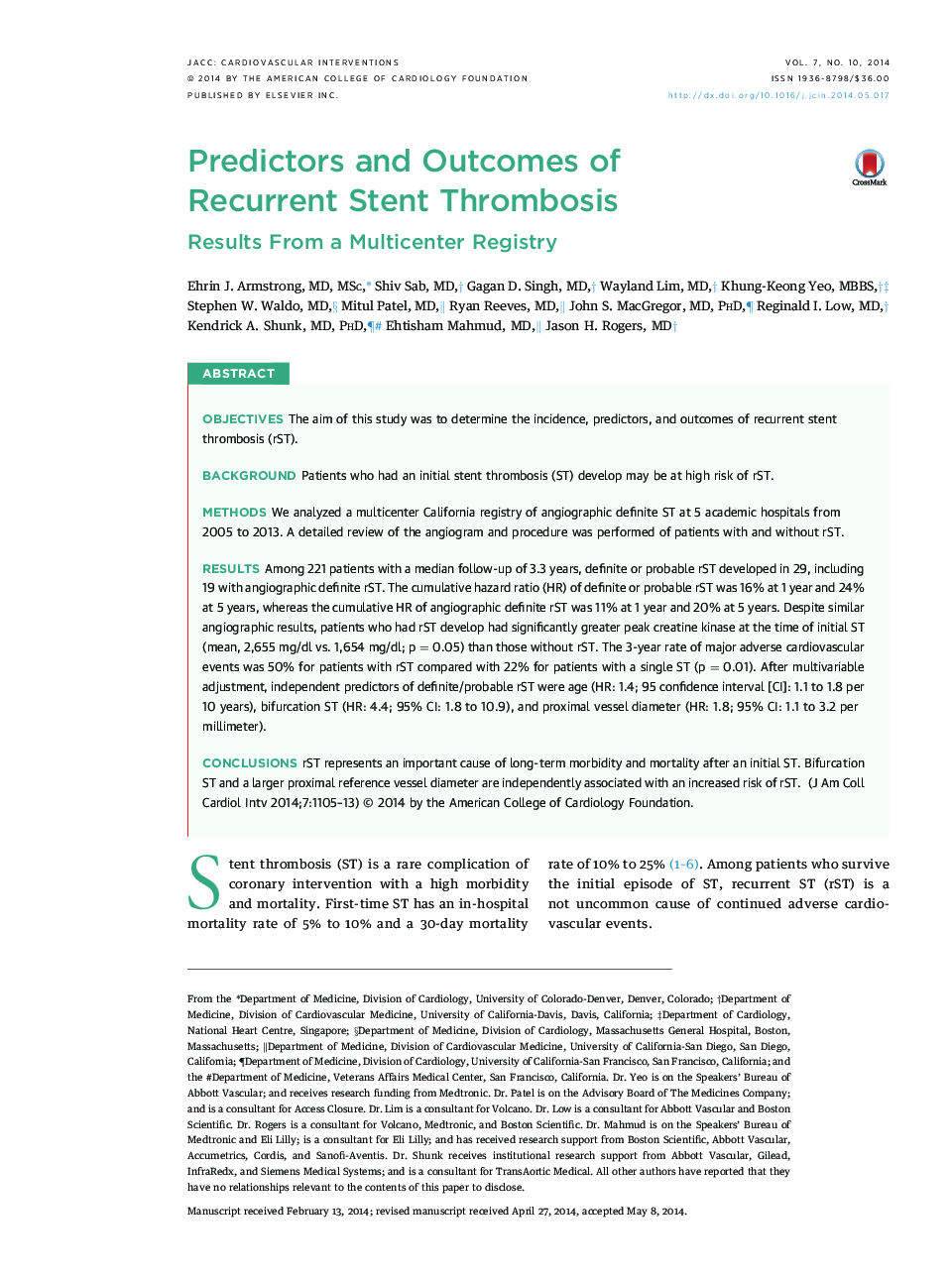| Article ID | Journal | Published Year | Pages | File Type |
|---|---|---|---|---|
| 2940684 | JACC: Cardiovascular Interventions | 2014 | 9 Pages |
ObjectivesThe aim of this study was to determine the incidence, predictors, and outcomes of recurrent stent thrombosis (rST).BackgroundPatients who had an initial stent thrombosis (ST) develop may be at high risk of rST.MethodsWe analyzed a multicenter California registry of angiographic definite ST at 5 academic hospitals from 2005 to 2013. A detailed review of the angiogram and procedure was performed of patients with and without rST.ResultsAmong 221 patients with a median follow-up of 3.3 years, definite or probable rST developed in 29, including 19 with angiographic definite rST. The cumulative hazard ratio (HR) of definite or probable rST was 16% at 1 year and 24% at 5 years, whereas the cumulative HR of angiographic definite rST was 11% at 1 year and 20% at 5 years. Despite similar angiographic results, patients who had rST develop had significantly greater peak creatine kinase at the time of initial ST (mean, 2,655 mg/dl vs. 1,654 mg/dl; p = 0.05) than those without rST. The 3-year rate of major adverse cardiovascular events was 50% for patients with rST compared with 22% for patients with a single ST (p = 0.01). After multivariable adjustment, independent predictors of definite/probable rST were age (HR: 1.4; 95 confidence interval [CI]: 1.1 to 1.8 per 10 years), bifurcation ST (HR: 4.4; 95% CI: 1.8 to 10.9), and proximal vessel diameter (HR: 1.8; 95% CI: 1.1 to 3.2 per millimeter).ConclusionsrST represents an important cause of long-term morbidity and mortality after an initial ST. Bifurcation ST and a larger proximal reference vessel diameter are independently associated with an increased risk of rST.
